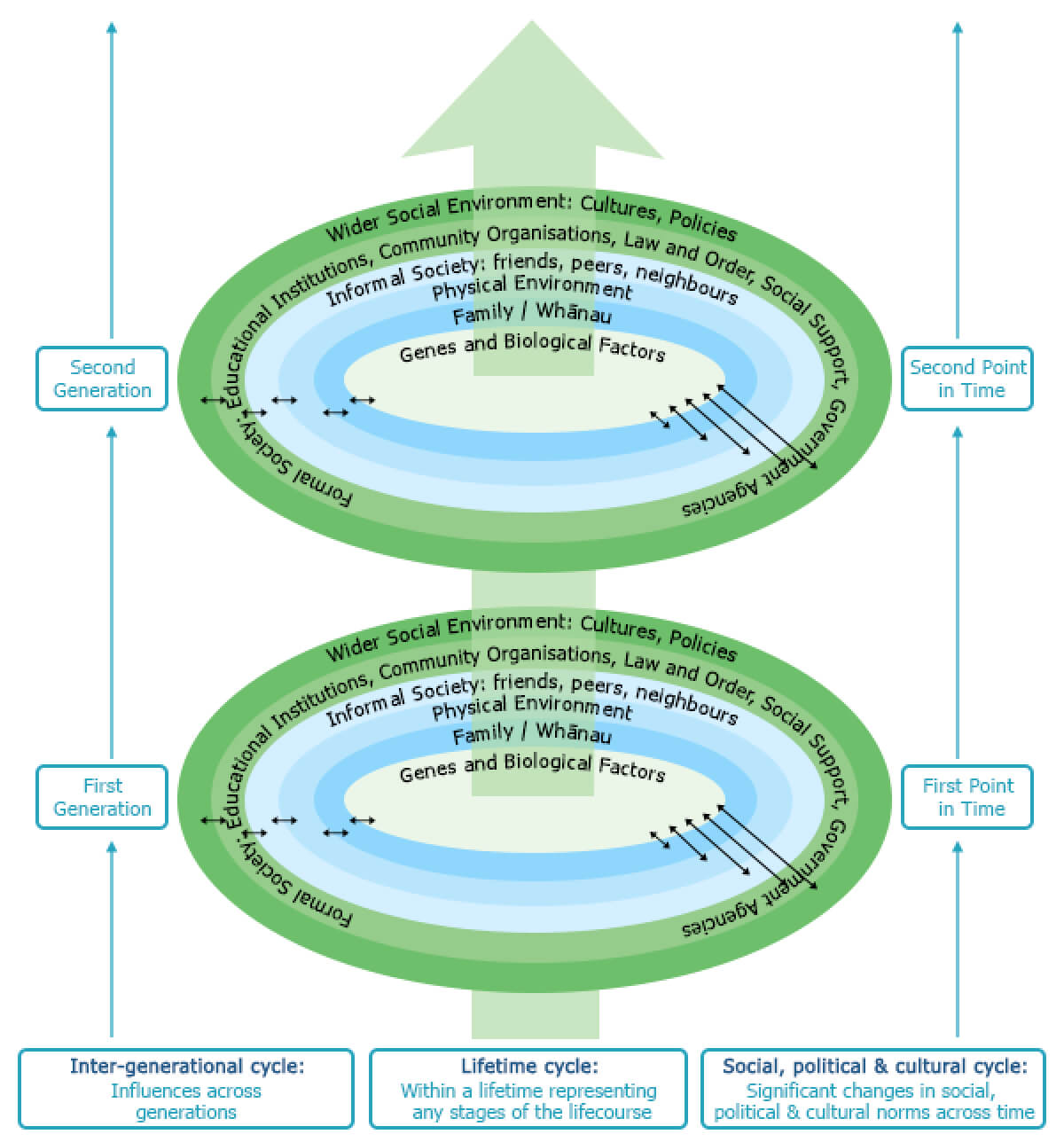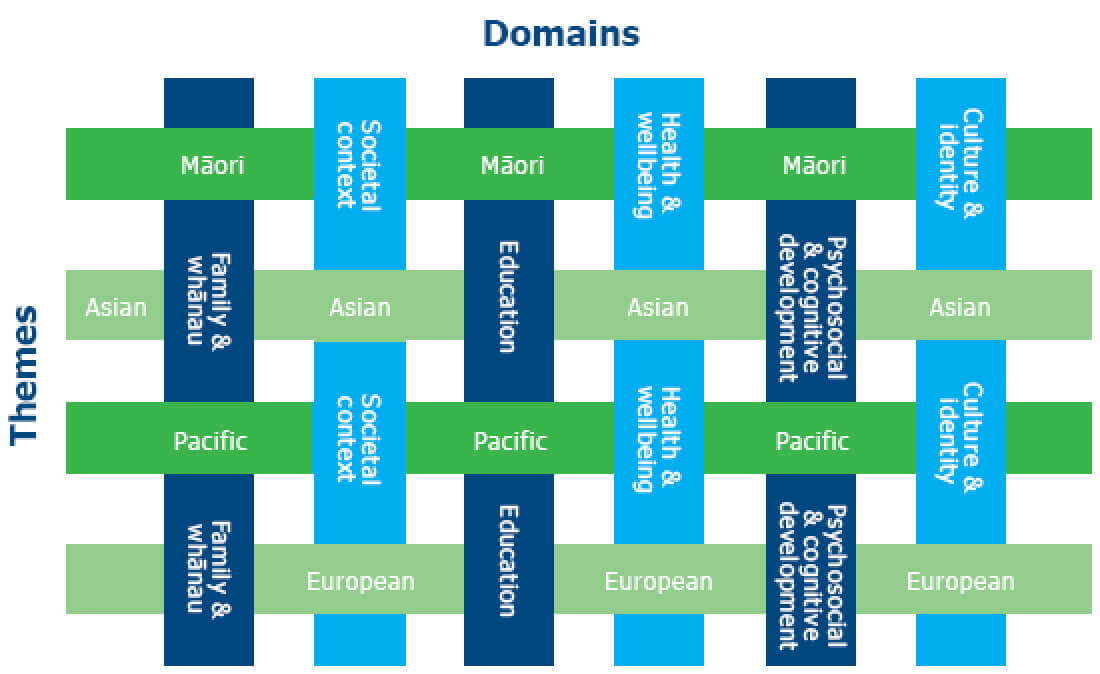Study Design
Growing Up in New Zealand provides an up-to-date, population-relevant picture of what it is like to be a child growing up in New Zealand in the 21st century.
Launched in 2008, it is a longitudinal study which means the same group of people (a ‘cohort’) is studied over a long period of time. This allows researchers to observe trends and connections over time.
Longitudinal studies can further our understanding in many different areas, including health and wellbeing, behaviour and psychology, culture and identify, and education. The information collected over time helps researchers to identify the determinants of wellbeing and disease, as well as the determinants of resilience and success.
Growing Up in New Zealand has been designed to reflect a specific conceptual framework and to ensure that it captures information across a number of domains.

Our conceptual framework
Growing Up in New Zealand is a longitudinal and multidisciplinary study. It is also specifically focused on translating findings to inform policy and service delivery.
The conceptual framework for Growing Up in New Zealand adopts a life course approach to child development.
It recognises the dynamic interactions between children and their environments, both their immediate family environments and the wider society in which they live in.
The information collected from the families is centered on the child, and is used to determine the factors that influence child development over time, rather than as a series of cross-sectional snapshots.
This model recognises that children’s development before they are born (intergenerational), and that the outcome of each child's life is the result of a complex interplay between their biology and their environment (epigenetic).

Domains
Growing Up in New Zealand focuses on six domains which are interwoven with four themes which recognise our ethnically diverse population.
The domains represent the variety of influences which are considered at any point in time for each child in the study.
The lattice is modelled on the weaving of a kete, a traditional Māori basket, which holds all the elements necessary for life.
At each data collection point in the study, participants are asked for information which provides detail in these different domain and theme areas.
Domain experts provide input across the multiple research disciplines and work alongside theme experts who provide guidance to relate this disciplinary evidence to the unique New Zealand population and context.

The questions we ask
The domain and theme structure informs the key research questions that Growing Up in New Zealand uses to understand child development in New Zealand over time.
These are summarised in four overarching research questions:
- What determines developmental trajectories across multiple levels of influence (political, social, cultural, intergenerational, familial and individual) through the life course in the major domains of interest?
- How are New Zealand children faring developmentally across multiple domains at discrete points in the life course?
- How are these developmental trajectories and outcomes associated with ethnicity across the life course?
- What factors and trajectories, particularly across multiple levels of influence, confer resilience and optimise development for New Zealand children?
%201.svg)